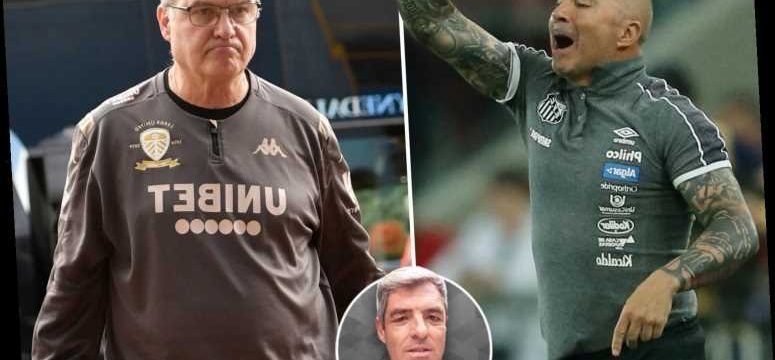MARCELO BIELSA has made quite an impact at Leeds. But, as the Argentine coach would probably be first to admit, his importance can be measured much more in the colleagues that he has influenced than in the titles he has won.
Pep Guardiola consulted him before taking over at Barcelona, Mauricio Pochettino owes him a debt – but few have gone as far as Jorge Sampaoli.
Without ever having met Bielsa, Sampaoli once sent him a letter apologising for being unable to put his methods into practice at one of his early coaching jobs.
Sampaoli has made a career out of a Bielsa-like commitment to a high press, seeking to strangle the opponent in their half of the field and create two against one situations close to goal.
His real breakthrough came with the Universidad de Chile club, who earlier this decade were for a while the most attractive in South America.
He then took on the Chilean national team. Bielsa had laid the groundwork. Sampaoli took them to the first ever serious silverware, winning the 2015 Copa America. He then moved to Europe, where he showed he could adapt to life on the other side of the Atlantic with an impressive spell in charge of Sevilla.
Had he stayed put, the Barcelona job may well have been his for the taking. But the Argentina national team came knocking. Sampaoli had never coached a big team in the land of his birth.
Trying to make a name for himself he had been forced to wander across South America in search of opportunities. And now he was being given the chance to coach Lionel Messi. He could not refuse. He should have done.
Sampaoli’s time with Argentina was a predictable disaster. Playing with a high line requires a defensive unit with pace, and a goalkeeper able to act as a sweeper. These are assets that Argentina have not had for some time.
Without them, the coach’s game plan was not viable, and the team were left horribly open. Argentina just managed to make it to last year’s World Cup. But they were a shambles in Russia, and were somewhat fortunate to get out of the group phase before France put them out of their misery.
Argentina had Sampaoli on a fat long-term contract. But his tenure had been so disastrous that they were keen to get rid of him. He walked away with a lot of money, but with his credibility seriously undermined. How would he rebuild his career?
He ended up in Brazil, where he has just ended a highly satisfactory season with Santos, Pele’s old club. A final day 4-0 win over champions Flamengo confirmed that Sampaoli’s team finished second in the league table – an excellent performance given the fact that he was operating on a shoestring.
He had a fraction of the resources available to some of Brazil’s giant clubs, but still produced a team that was both attractive and competitive.
He has proved himself once more – and would now seem to hold the belief – entirely justified – that he deserves to work at a club rich enough to give him a chance of winning some titles. He is likely to demand that Santos make significant investments in their squad, which they will struggle to do.
Nearby Palmeiras, in the city of Sao Paulo, are both wealthy and disappointed with the stodgy football they played this year. They could be an option – as could reigning Argentine champions Racing, without the resources of Palmeiras but able to give Sampaoli the opportunity to shine in front of his own public.
Where will Sampaoli go next? It promises to be an end of year South American talking point. And further down the line, when Leeds are looking for someone to take over from Marcelo Bielsa, they could do a lot worse than Jorge Sampaoli.
Source: Read Full Article



